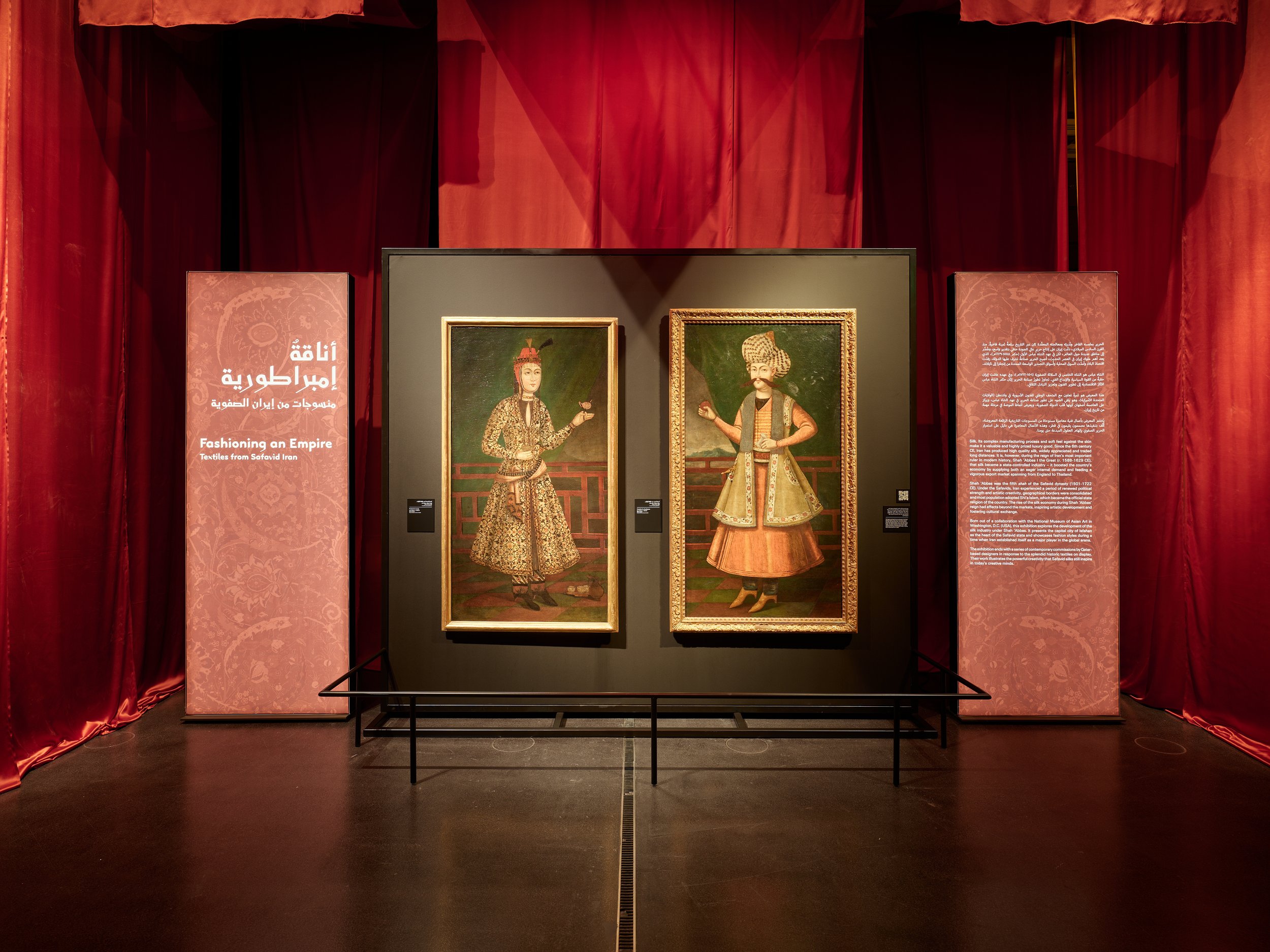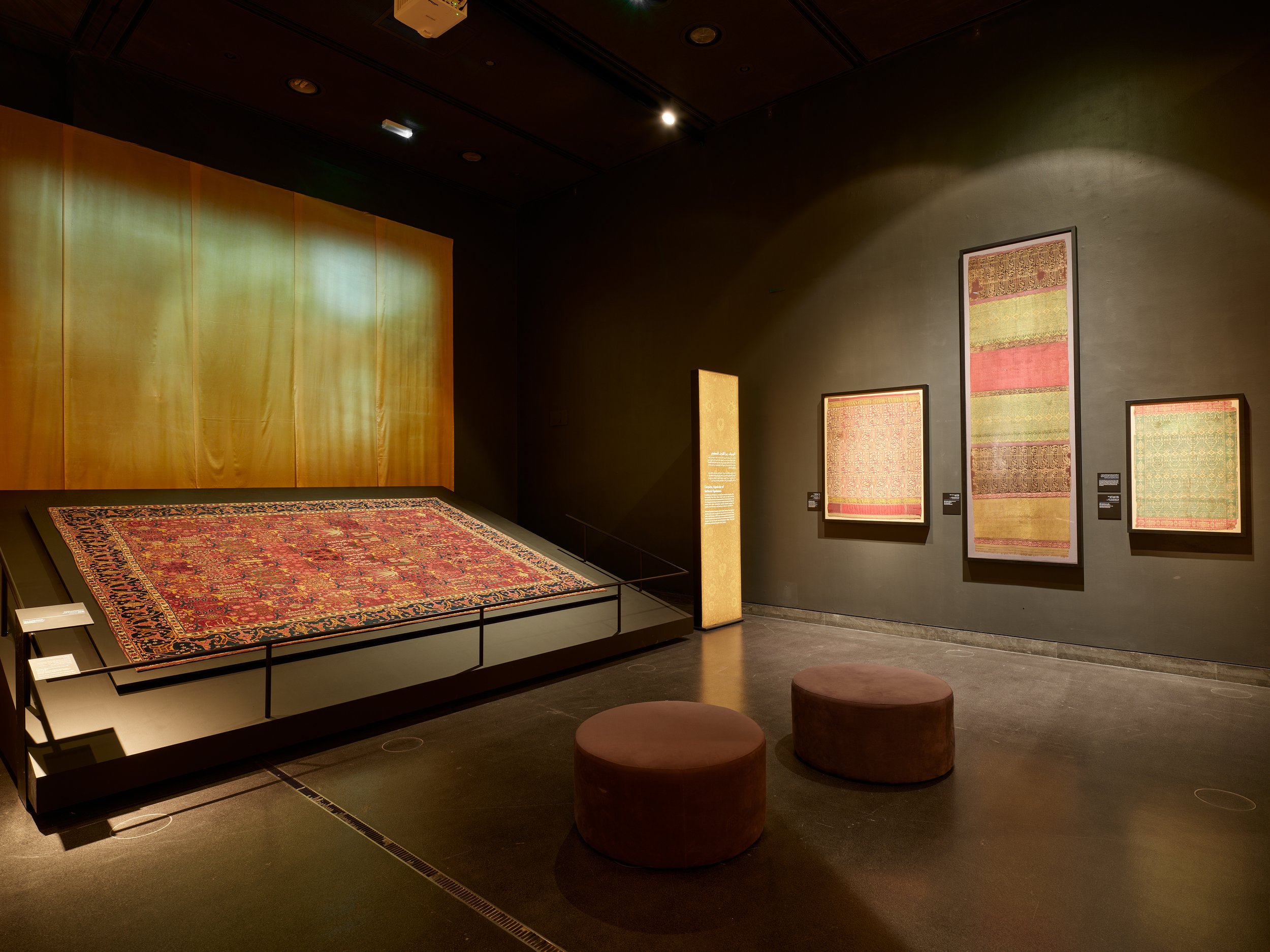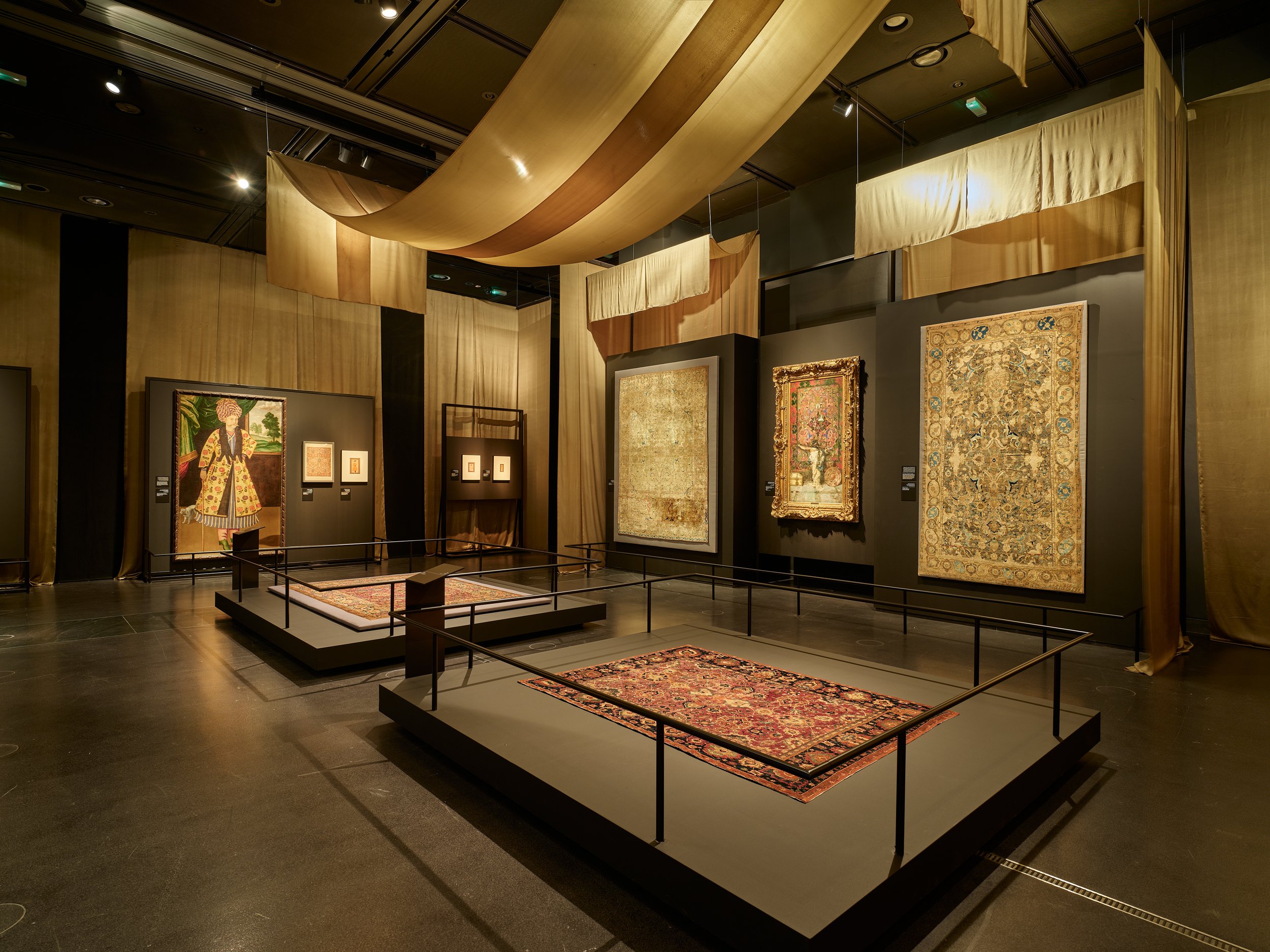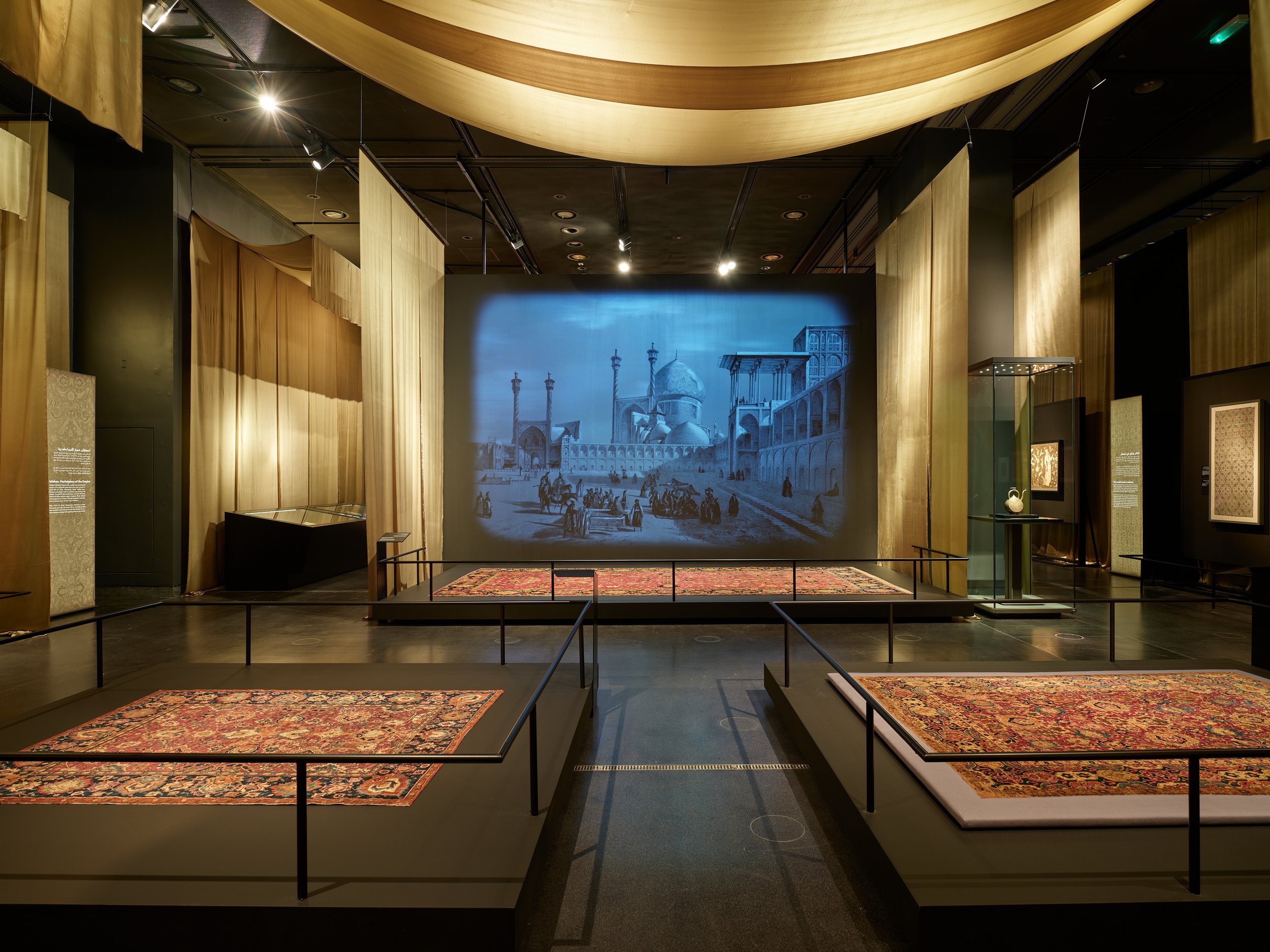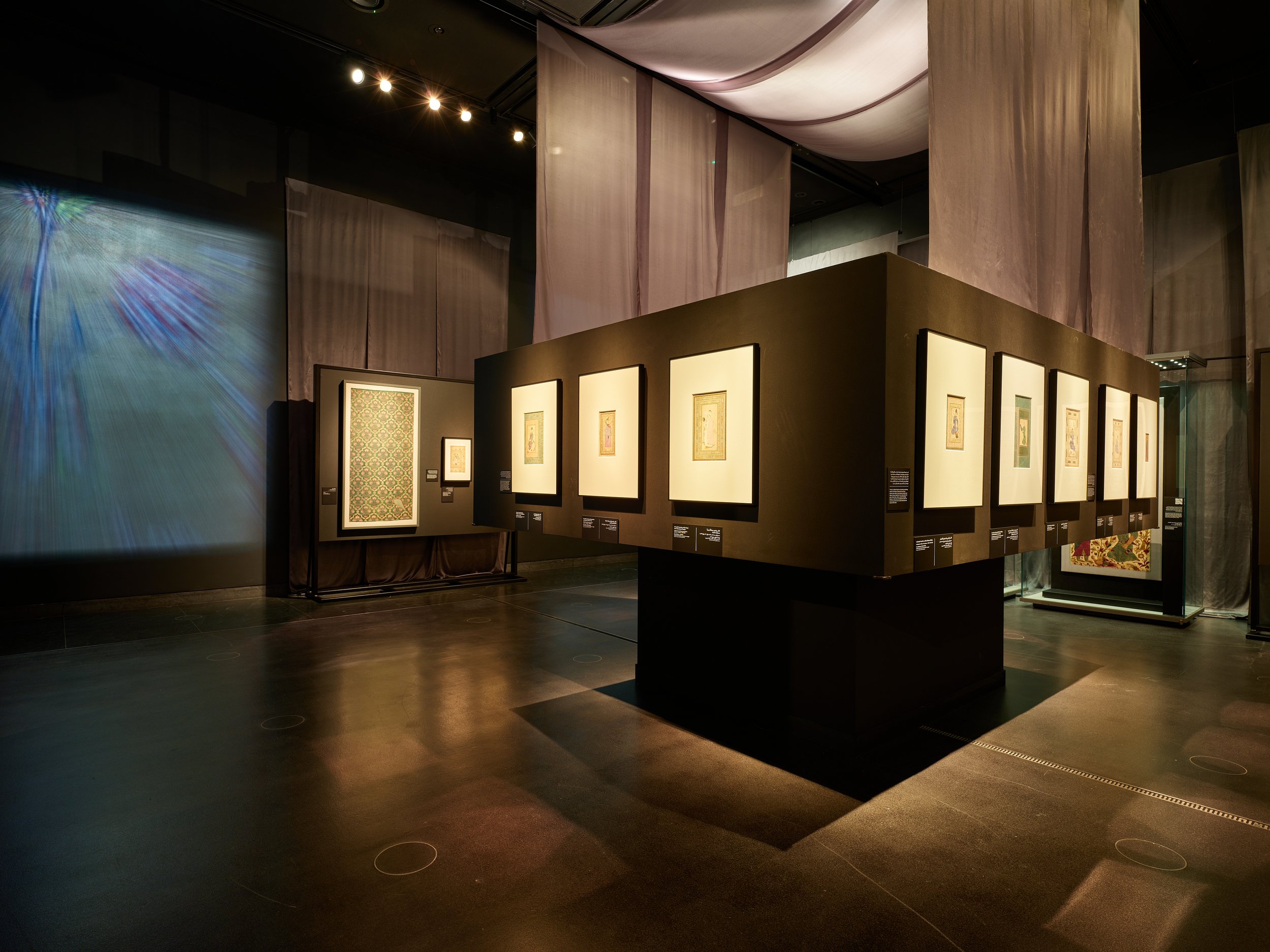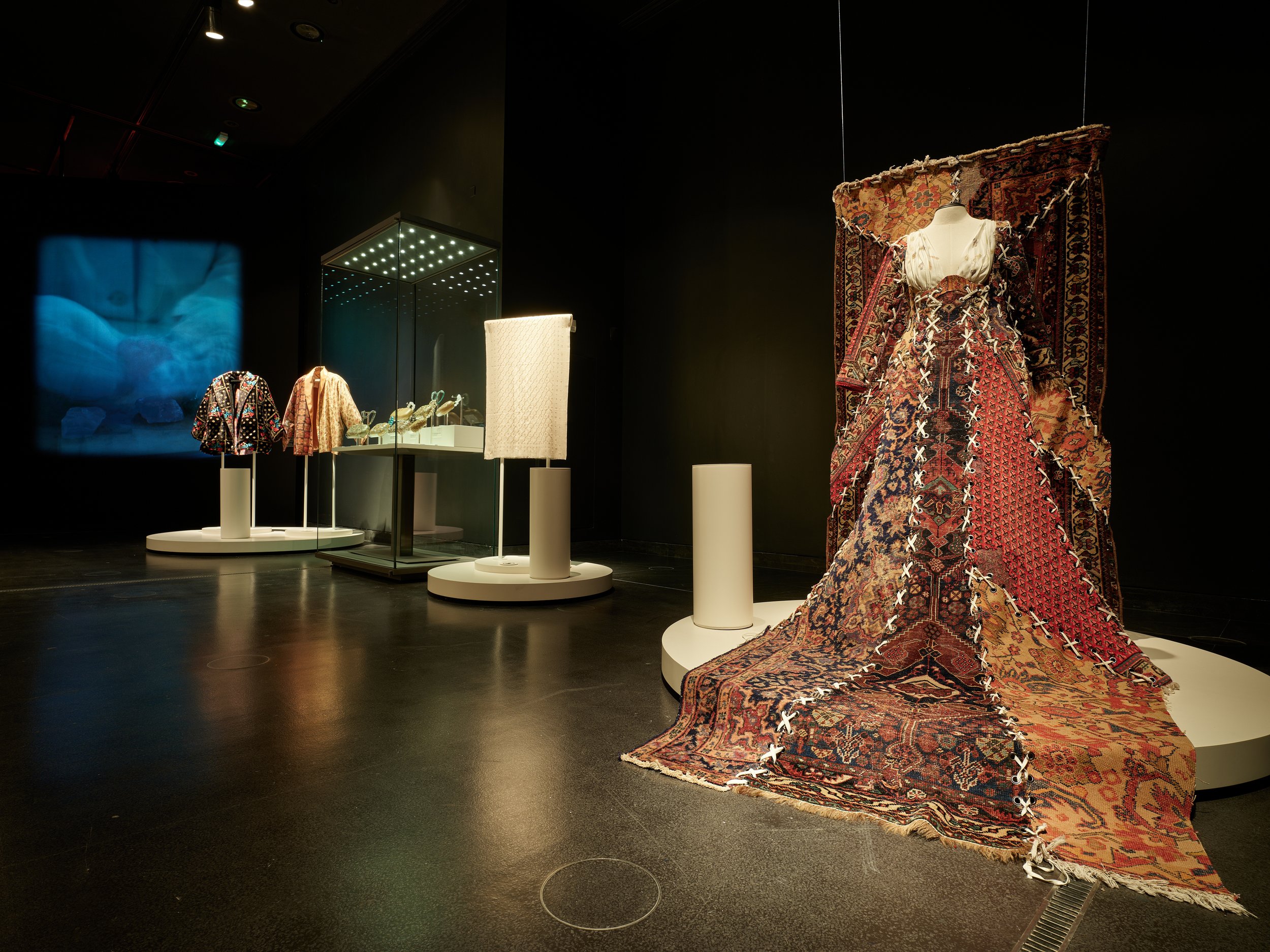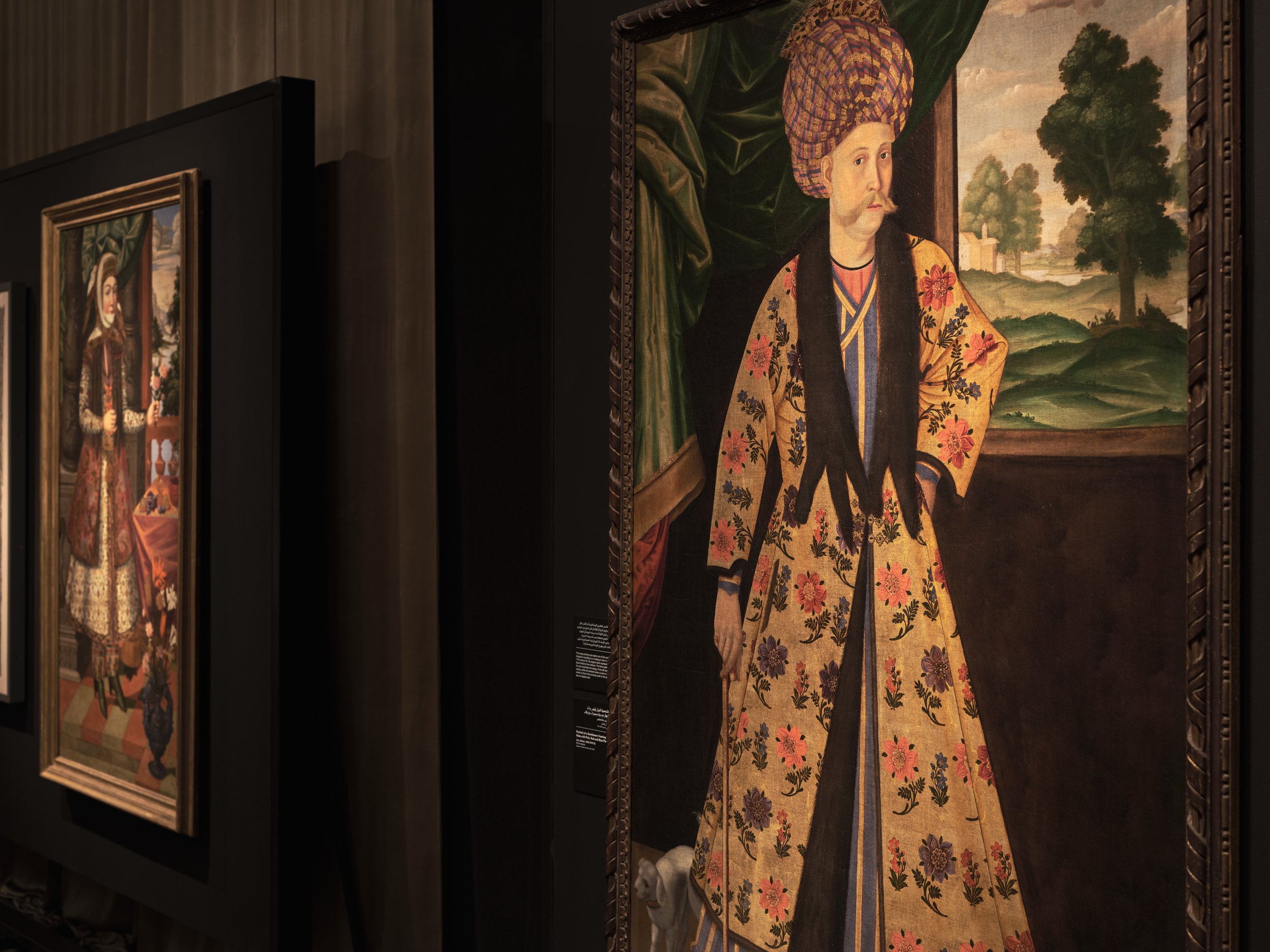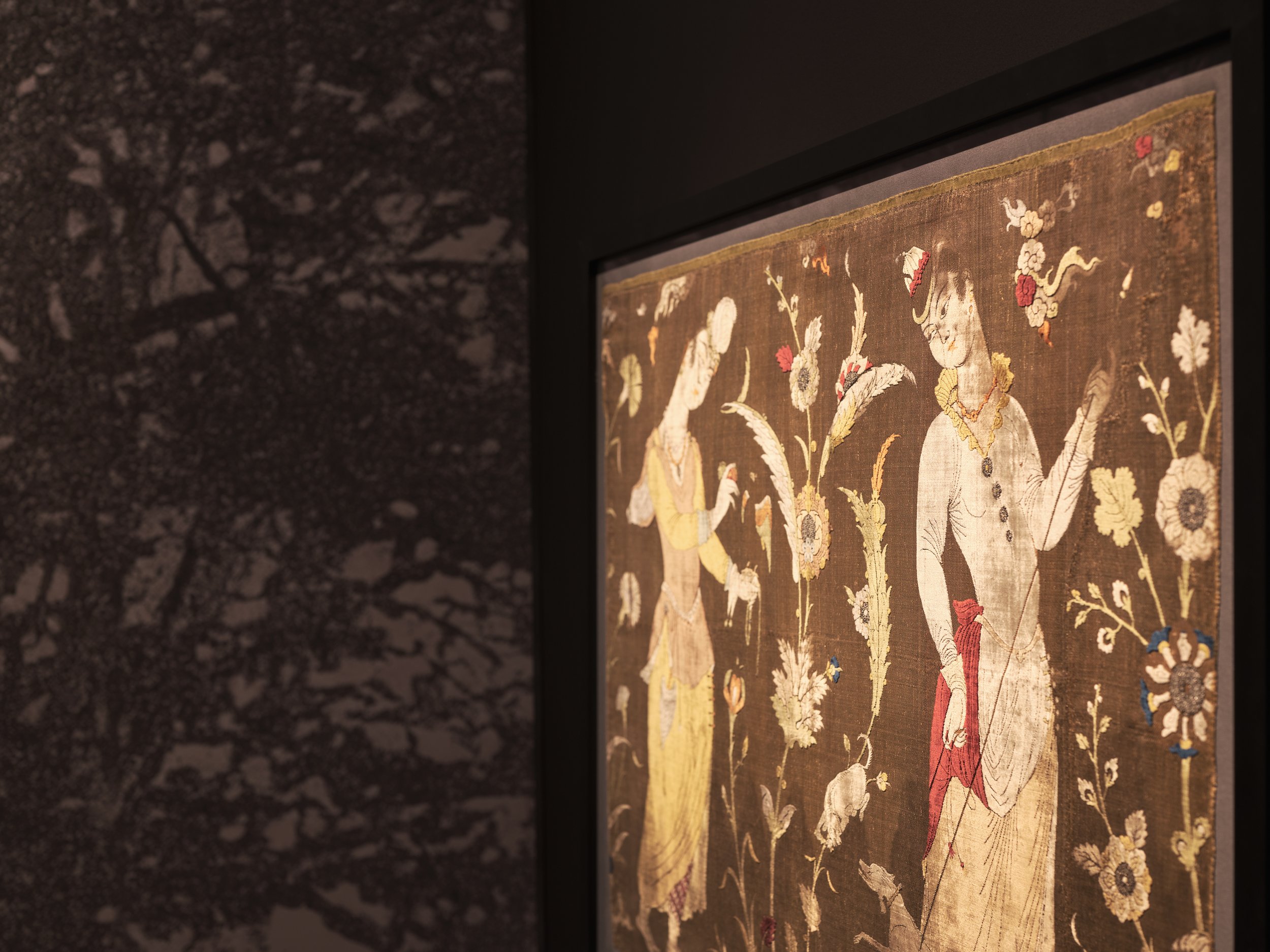Fashioning an Empire: Textiles from Safavid Iran at the Museum of Islamic Art, Doha
Fashioning an Empire
Textiles from Safavid Iran
Until June 22, 2024
This captivating exhibition highlights the critical role that silk played during the Safavid period (1501–1736 CE).
Silk. Its complex manufacturing process and supple feel against the skin make it a valuable and highly prized luxury good. Since the 6th century CE, Iran has produced high-quality silk, widely appreciated, and traded long distances. It is, however, during the reign of Iran’s most important ruler in modern history, Shah ‘Abbas I the Great (r. 1588-1629 CE), that silk became a state-controlled industry – it boosted the country’s economy by supplying both an eager internal demand and feeding a vigorous export market spanning from England to Thailand. Shah ‘Abbas was the fifth shah of the Safavid dynasty (1501-1722 CE). Under the Safavids, Iran experienced a period of renewed political strength and artistic creativity, geographical borders were consolidated, and most of the population adopted Shi‘a Islam, which became the official state religion of the country. The rise of the silk economy during Shah ‘Abbas’ reign had effects beyond the markets, inspiring artistic development and fostering cultural exchange.
Born out of a collaboration with the National Museum of Asian Art in Washington, DC (USA), this exhibition explores the development of the silk industry under Shah ‘Abbas. It presents the capital city of Isfahan as the heart of the Safavid state and showcases fashion styles during a time when Iran established itself as a major player in the global arena.
The exhibition ends with a series of contemporary works created by Qatar-based designers in collaboration with M7, Qatar’s epicenter for innovation and entrepreneurship in fashion and design. Their artworks respond to the splendid historic textiles on display and illustrate the powerful creativity that Safavid silks still inspire in today’s creative minds.
Exhibition Preview
